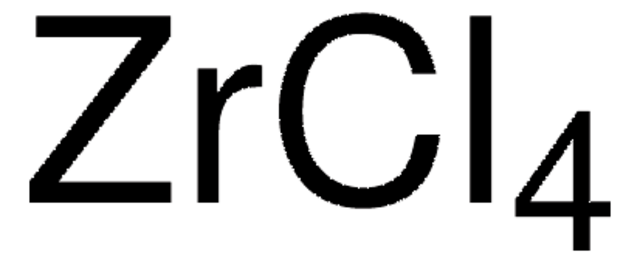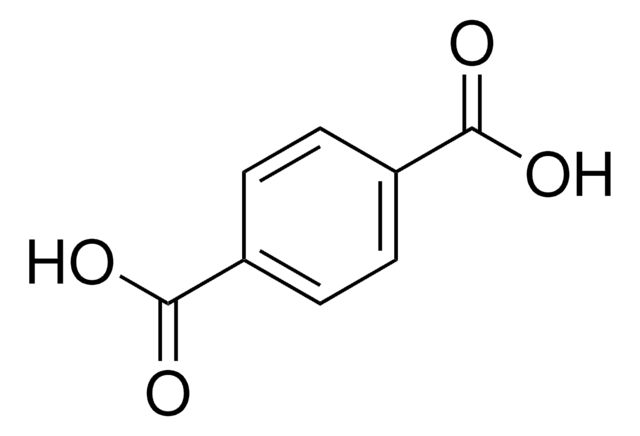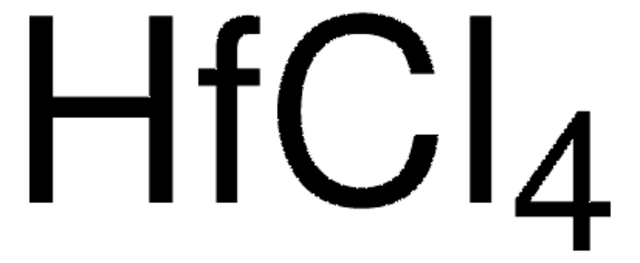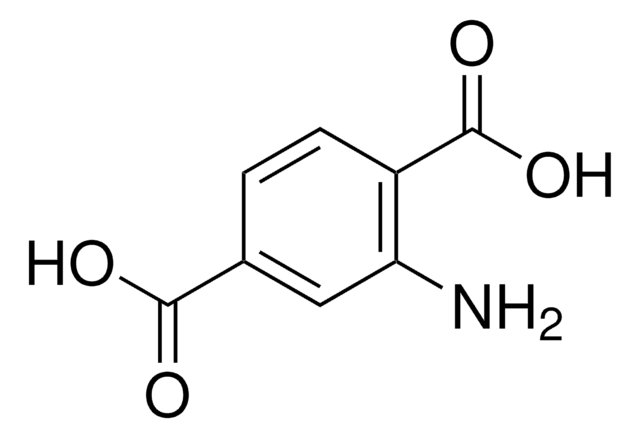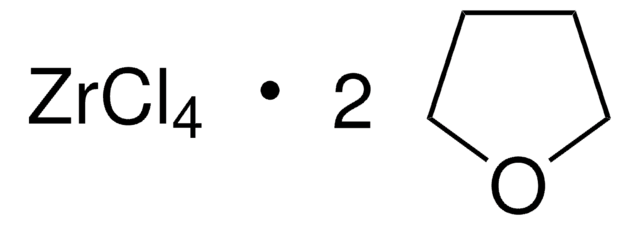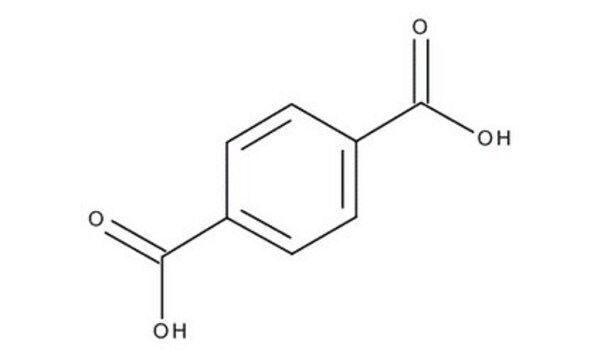647640
Zirconium(IV) chloride
anhydrous, powder, 99.99% trace metals basis
Synonym(s):
Tetrachlorozirconium, Zirconium tetrachloride
About This Item
Recommended Products
grade
anhydrous
vapor pressure
1 mmHg ( 190 °C)
Assay
99.99% trace metals basis
form
powder
reaction suitability
reagent type: catalyst
core: zirconium
impurities
<50 ppm hafnium
transition temp
sublimation point 331 °C
density
2.8 g/mL at 25 °C (lit.)
application(s)
battery manufacturing
SMILES string
Cl[Zr](Cl)(Cl)Cl
InChI
1S/4ClH.Zr/h4*1H;/q;;;;+4/p-4
InChI key
DUNKXUFBGCUVQW-UHFFFAOYSA-J
Looking for similar products? Visit Product Comparison Guide
Related Categories
General description
Application
accessory
Signal Word
Danger
Hazard Statements
Precautionary Statements
Hazard Classifications
Met. Corr. 1 - Skin Corr. 1B
Supplementary Hazards
Storage Class Code
8B - Non-combustible corrosive hazardous materials
WGK
WGK 3
Flash Point(F)
Not applicable
Flash Point(C)
Not applicable
Personal Protective Equipment
Choose from one of the most recent versions:
Already Own This Product?
Find documentation for the products that you have recently purchased in the Document Library.
Customers Also Viewed
Related Content
We offer a complete line of the highest purity inorganic salts and materials for the micro and nanoelectronics market.
Our team of scientists has experience in all areas of research including Life Science, Material Science, Chemical Synthesis, Chromatography, Analytical and many others.
Contact Technical Service